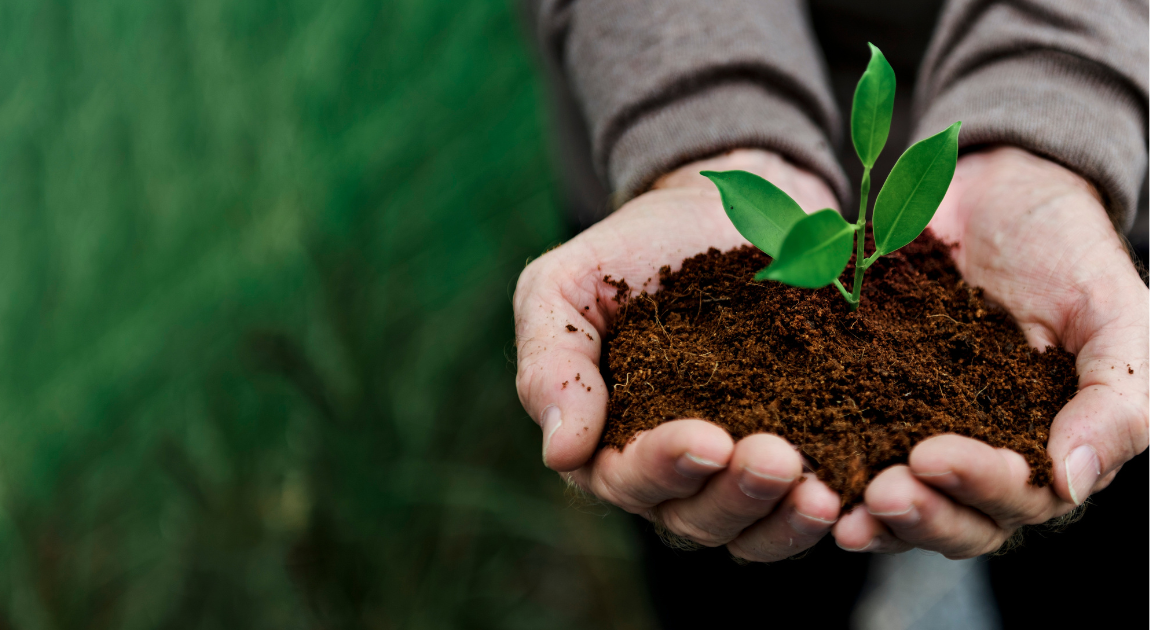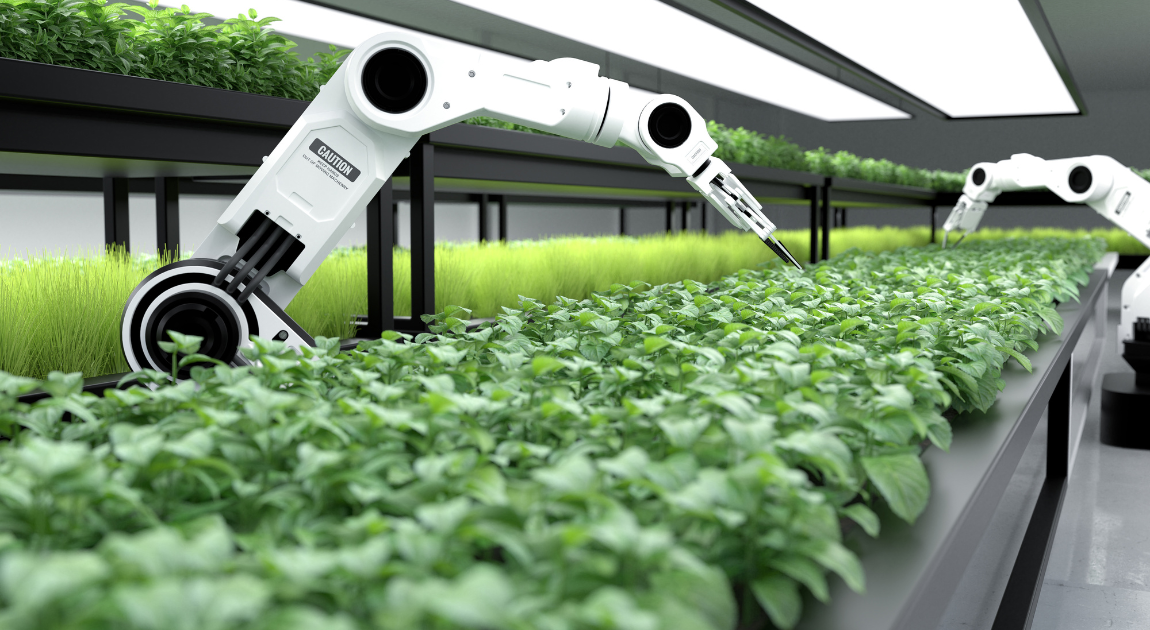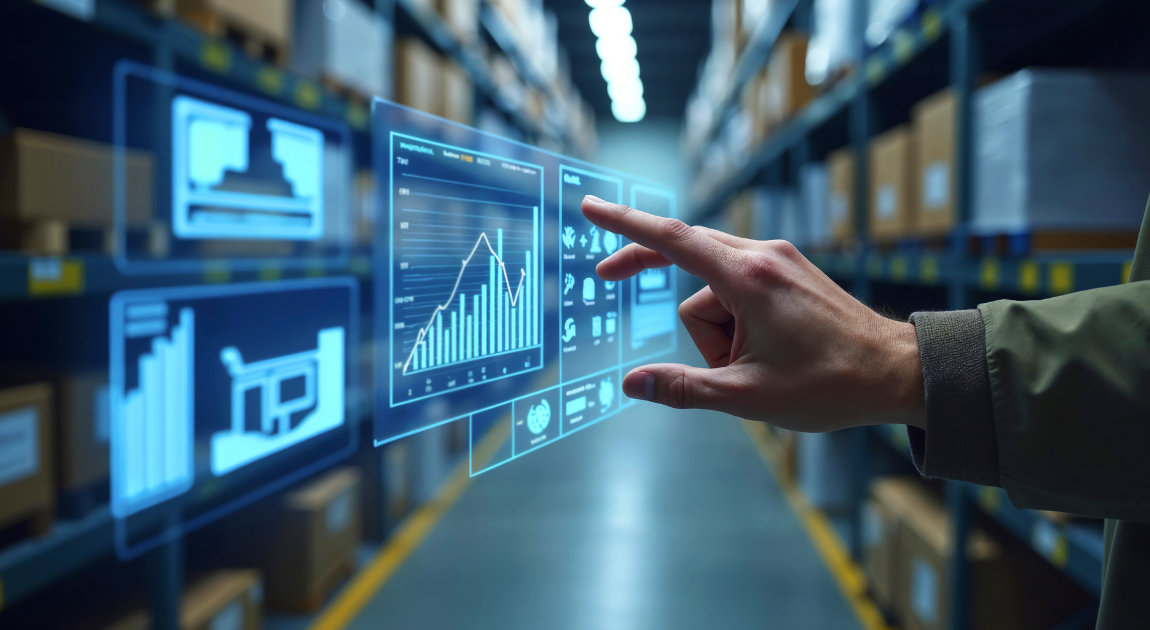Sustainable farming is slowly but steadily moving in the direction of becoming the default variant. Agricultural technologies like drones and AI systems are getting more affordable, more efficient, and less exotic, so in the nearest future we’re likely to see more companies of different sizes adopting these solutions. In brief: sustainability is becoming feasible business-wise, and it’s largely thanks to tech. Here’s what you may want to know on the topic as of today.
The need for sustainable farming solutions
Agriculture is both a victim of, and a contributor to, environmental stress. About 70% of global freshwater withdrawals, around 1/4 of greenhouse gas emissions – and a required 60-70% increase in production by mid-century – all that is a big challenge to which we’re only just starting to find the keys.
And many of those puzzle pieces come from the sustainable practices box. Today’s sustainable farming is about balancing the inevitable growth with minimizing the environmental impact, and it’s evolving under well-deserved governmental endorsement in various nations. Examples include:
- The European Union’s Common Agricultural Policy (CAP) ties subsidies to compliance with environmental practices, especially with nutrient management.
- The US counterpart, the Sustainable Agriculture Research and Education (SARE) program supports farmers in implementing more regenerative and efficient practices.
- Meanwhile, India’s Paramparagat Krishi Vikas Yojana (PKVY) promotes organic farming and offers training in natural resource management.
Of course, tech is the major enabler. Even now, AgTech already helps reduce water and fertilizer and pesticide use with targeted application, monitor soil health, and ensure compliance.
The question is, what exact technologies are ones that allow to be sustainable and efficient at the same time?
AgTech at the core of sustainable agriculture systems
Let’s look at the current AgTech arsenal through the sustainability optics to see what the major tools and approaches are.
Precision agriculture
No two patches in the same field are exactly the same, so if you count how many resources are wasted on assuming they are, it makes sense to reconsider the approaches. Precision agriculture is the method that manages field variability, helping apply the resources where they are needed.
This approach typically relies on GNSS-based field mapping, Variable Rate Technology (VRT), and data analytics to reduce waste and maximize output. According to USDA, precision agriculture can enhance yields by 15-20%, while EU data says VRT for fertilizers reduces the use of chemicals by 40%. It also prevents soil degradation and erosion by amplifying the good old crop rotation techniques.
IoT and smart sensors
The most immediately visible tech aspect of AgTech is the IoT sensor use: soil sensors, weather stations, and more. Smart sensors allow users to do diverse things, from monitoring soil moisture, pH, and temperature, to pest control and automating irrigation for sparing water.
Crucially, IoT use is not about data that travels back and forth to the back office, but rather about decision making here and now, which makes farming more flexible and thus sustainable when necessary.
Remote sensing and drones
The now-ubiquitous drones are getting even more affordable, so they can function in more agricultural contexts than before. A single drone flight can survey hundreds of acres and generate actionable insights the same day. According to MarketsandMarkets, the global agricultural drone market is projected to grow from $4.5 billion in 2023 to over $9 billion by 2028, largely driven by sustainability needs.
It’s no longer a novelty to see drones equipped with multispectral or thermal cameras; meanwhile, satellite imagery is also used, e.g. for NDVI imaging and geospatial analysis.
AI and analytics
Data processing is at the heart of these processes, so AI, with its capacities of turning raw data blobs into insights is an emerging power. As of now, AI is used in yield prediction models, disease detection, and crop planning.
Machine learning models can now predict crop yields with over 90% accuracy in many row crops, depending on data quality. These insights not only help reduce input waste but also support long-term financial and ecological planning.
Additionally, when paired with blockchain or ERP, AI can also help track carbon footprints and ensure regulatory compliance for sustainable certifications.
Curious about how this looks in practice? Check out a business case of collaboration with Agtellio, where Lionwood.software helped create parts of a holistic digital product managing agricultural imaging data for better efficiency.
How affordable is sustainable AgTech?
However, it is one thing to read about innovation on tech news websites and quite another to actually implement the thing. Since we’ve largely been talking about lots and lots of hardware and AI so far, it may seem sustainable AgTech is something only large enterprises can afford. Up to a certain point, this was the case, but things are changing, and there are several factors at play.
- Even though the upfront investment can be substantial, its ROI comes about fast enough. As of 2021, for example, smart irrigation and automated fertilization plus yield forecasting accounted for 20-40% cost reductions within the first two seasons.
- Secondly, there’s governmental help and development banks. For those in Europe, the CAP provides financial incentives for digital tools that are proven to link to sustainability. In the US, EQIP offers cost-sharing for precision agriculture.
- Finally, and most importantly, since there’s now demand for approachable sustainable agricultural solutions, it leads to more supply being generated. This comes in the form of subscription-based models (basically SaaS) and plug-and-play IoT kits.
And even for those who consider building custom software systems, the rise of open-source AgTech opens a lot of doors, with initiatives like FarmOS or OpenATK.
Examples of sustainable agriculture business models
What’s really interesting about the evolving sustainable agriculture tech is that the actual situations where it’s applied are very, very different – so the resulting business models are diverse, too. However, we can already see some patterns in what works and what doesn’t, and start classifying the success stories. Here are some models that work well:
Data-driven micro-farming
Micro-farms are about getting small-scale but incredibly intensive using vertical farming, IoT, precision irrigation, and mobile apps. For instance, in the Netherlands, urban farms with sensor-driven hydroponics can produce up to 5x more yield per square foot than a typical field, with only 1/10 of the water amount. The produce is then sold to the nearest market or restaurant, so the carbon footprint from supply chain operations is almost non-existent.
Technological livestock farming
Livestock typically means a lot of waste, and a lot of routine tasks. With sensors and automation, some businesses (like dairy) can achieve drops in veterinary costs while increasing production without increasing the number of animals. Tech-wise this means RFIDs, robotic milking, AI for health forecasting, and climate control for barns.
Regenerative AgTech farming
This model is about using practices that don’t degrade soil quality (like cover cropping and no-till farming) with tech for monitoring. For example, regenerative farms in the US Midwest are using drone imagery + AI to evaluate soil carbon levels and determine areas that will need nitrogen fixing crops. Technologically, this approach calls for (obviously) drones, soil nutrient sensors, and AI to improve soil quality. For carbon credit validation, blockchain is starting to be used.
Platform-enabled farmer cooperatives
This one is a curious way to bypass the initial investment bottleneck – smallholders band together for shared access to drones, autonomous tractors, and the like. This approach has been successfully used in Kenya to improve mechanization access by a factor of 3, while increasing harvest efficiency, so it’s logical we should see more of it soon.
Closed-loop agricultural systems
Sustainability here means nothing goes to waste. These businesses integrate crop and livestock production, use anaerobic digesters to convert waste into energy, and recycle water and nutrients back into the system. For example, in Austria, some mixed farms use animal waste to produce biogas, which powers the irrigation systems and greenhouse heating. Water used for crops is recycled through natural filtration beds.
AgTech for sustainable livestock and supply chain
Now let’s briefly look at the parts of agriculture that don’t directly involve fields but still contribute to the large picture: livestock and logistics.
With livestock, the name of the game is to optimize animal welfare, which, in term, allows to minimize the environmental footprint of what goes into raising these animals. For example, we’ve mentioned wearable sensors that track vital signs and movement patterns – and the result is, since disease is detected earlier on, there’s less reliance on antibiotics.
Automated feeding systems, meanwhile, are the livestock counterpart to precision agriculture, in the sense that with precise nutrient delivery, there’s less feed waste, so the methane emissions go down.
Logistically, AgTech is also helping close the loop from farm to market. Cold chain monitoring prevents spoilage, thus cutting down 1/4 of food waste. At the same time, there will likely be an environmental impact from AI demand forecasting, but we’ll need to wait several years until it is reliably quantified.
Key benefits of AgTech-driven sustainable agriculture
So which of the benefits of sustainable agricultural technologies have already been assessed? It turns out, quite a lot, and the good news is that these benefits go beyond the purely ecological metrics. Here are the main observations, grouped by category:
- Improved resource efficiency, productivity, and profitability. Precision agriculture is sensible in business terms — especially with resources you have to pay for. Water savings can reach up to 30%, and we’ve seen how fertilizer use is reduced by 15-40%. Moreover, autonomous tractors and robots work on optimized routes, meaning they eventually “eat” about 10% less fuel.
- Higher yields and crop quality. Especially with row crops like corn, precision agriculture accounts for on average 15% yield improvements. Using AI for disease detection can reduce crop losses by up to a quarter, too, which means better margins business-wise.
- Revenue boost. Optimizing planting decisions and inventory management allows to increase revenue by up to 25%, with ROI from a holistic AgTech system achieved within 2-3 growing seasons.
- Environmental benefits. Precision tillage and autonomous machinery reduce emissions from field operations. CNH Industrial reports a 10–20% cut in CO₂ emissions when switching to automated equipment. With improvements in soil health and chemical runoff figures, and preserving biodiversity, this is a long term benefit.
The future (and conclusions)
As climate pressures intensify and global food demand continues to rise, sustainability and tech are getting more and more related. Over the coming years, we’re likely to see greater integration between technologies, where drones, IoT sensors, and AI-powered analytics operate in harmony, enabling autonomous farming systems that can adapt in real time. Innovations like vertical farming, soil-less cultivation, and blockchain-based food traceability will also continue to shape the landscape.
At the same time, modular and low-cost toolkits tailored for smallholders will become more prominent, especially as public and private sectors push for inclusivity and resilience in food systems.
However, this future depends not only on what technologies exist, but on how they are developed, customized, and deployed. One-size-fits-all platforms often fall short in such a complex and diverse industry. That’s why deeply tailored AgTech designed to meet the unique needs of each farm, cooperative, or agribusiness is key to unlocking lasting value.
Ready to build solutions that truly fit your operations? At Lionwood.software, we specialize in creating custom agricultural software that bridges cutting-edge tech with real-world farming needs. Whether you’re looking to integrate precision tools, streamline operations, or design scalable IoT ecosystems, our team will help you turn your goals into a working, efficient model.
FAQ
Is sustainable AgTech only suitable for large farms with big budgets?
Not anymore. While early AgTech systems were often expensive and complex, today’s landscape is much more accessible. Affordable IoT kits, subscription-based platforms, and open-source tools like FarmOS are lowering entry barriers. Additionally, financial support from programs like the EU’s CAP and the U.S. EQIP helps smaller producers invest in sustainable tech with reduced risk.
What kind of ROI can farmers expect from adopting AgTech?
ROI varies depending on the technology and crop type, but data shows encouraging results. For example, implementing precision irrigation and automated fertilization has led to 20–40% cost reductions within two growing seasons. Meanwhile, overall yield improvements of 15–20% are common when precision agriculture and AI-powered tools are adopted.
How does AgTech help with climate resilience in agriculture?
AgTech supports climate resilience through adaptive systems: IoT sensors and drones detect soil moisture or crop stress early, allowing quick intervention. AI-based models predict disease outbreaks or yield fluctuations, reducing losses. Some farms are also using data-driven tools to optimize crop rotation and regenerative practices, helping soil retain more carbon and withstand droughts.
Are there regulations that support or incentivize AgTech adoption?
Yes, several national and regional policies promote tech-enabled sustainability. The EU’s Common Agricultural Policy (CAP) ties funding to eco-compliance, including the use of digital tools. In the U.S., the SARE and EQIP programs support sustainable practices financially. India’s PKVY initiative encourages organic farming using resource-efficient technologies, and similar schemes exist in other parts of the world.
Can AgTech improve livestock sustainability as well?
Absolutely. Technologies like RFID tags, automated feeders, and AI-powered health monitoring help reduce feed waste, improve animal welfare, and cut methane emissions. For example, precision feeding systems can reduce overfeeding and emissions, while early disease detection reduces antibiotic use—both of which contribute to more ethical and sustainable livestock farming.














